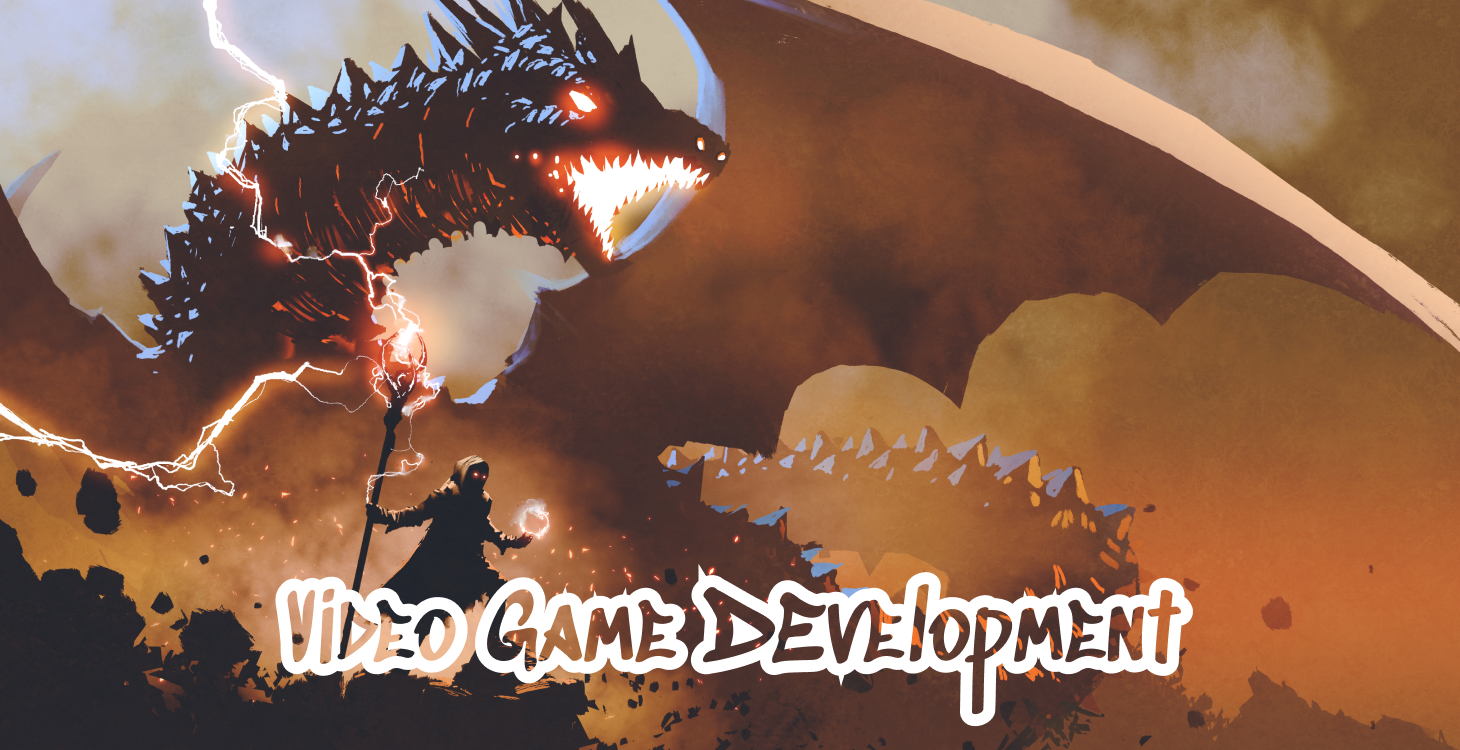What is Video Game Development? 10 Interesting Facts about Future of Video Game Development.
Undoubtedly, the mobile gaming sector is expanding quickly and elevating itself to the top of the most alluring and profitable industries. In other words, the sector has surpassed all technical and economic benchmarks.
Even if it’s obvious that I’m not a prophet, the future of video games may thankfully be predicted by actual professionals. The gaming industry generated $184 billion in revenue in 2022; by 2025, there are projected to be 3.6 billion gamers worldwide. Furthermore, it’s not just children: 38% of gamers are between 18 and 34, and 16% are above 55.
The popularity of video games has been rising consistently for years. And the trend has only gotten stronger as the social advantages of video games have come to light. The gaming industry has surpassed both the movie and sports industries in size.
So what comes next? The popularity of gaming will only increase culturally. But how will new technological advancements affect the gaming experience, and how will they grow the future of video games?
What Exactly is Video Game Development?

Video game development creates games for various platforms, such as consoles, PCs, mobile devices, and virtual reality devices. It involves various tasks, including game design, programming, art and animation, sound design, quality assurance, and project management.
The typically begins with game design, which involves creating the overall concept for the game, including the game mechanics, storyline, characters, and visual style. Once the game design is finalized, the development team will move on to programming, which involves writing the code to make the game function. This may include developing physics engines, artificial intelligence systems, and user interfaces.
Art and animation are also critical parts of game development. This involves creating the game’s visual elements, including the characters, environments, and special effects. Sound design is also important for creating immersive gaming experiences, including music, sound effects, and voice acting.
Video game development is a complex and collaborative process that requires a diverse range of skills and expertise. As the industry continues to grow and evolve, new technologies and platforms are emerging, creating exciting opportunities for game developers to push the boundaries of what is possible in gaming.
How Large is India’s Online Gaming Market?

For the Indian gaming market, which is anticipated to grow from $2.8 billion in 2022 to $5 billion in 2025, a CAGR of 28–30% is forecast. According to predictions, there will be 420 million gamers nationwide in 2022, 450 million in 2023, and 500 million by 2025. The Indian mobile gaming sector will be worth $5 billion by 2025. Compared to 8% in China and 10% in the United States, the country’s sector increased at a 38% CAGR between 2017 and 2020.
The Future and Evolution of Video Game Development

The future of video game development looks promising with technological advances and changing consumer preferences. Here are some possible trends for the future of video game development:
1. Virtual Reality (VR) and Augmented Reality (AR):
Virtual Reality (VR) and Augmented Reality (AR) are considered the future of video game development because they offer a level of immersion and interactivity that traditional games cannot match. These technologies enable players to experience games in a whole new way, making it feel like they are truly inside the game world.
Additionally, integrating VR and AR with other emerging technologies, such as artificial intelligence and 5G networks, will revolutionize the gaming industry in the coming years, leading to new and exciting gaming experiences.
2. Cross-Platform Gaming:
Cross-platform gaming is the ability for players on different gaming platforms to play together in the same game. With the rise of gaming on mobile devices, consoles, and PCs, cross-platform gaming has become more important than ever before. Developers will likely continue to focus on cross-platform compatibility to reach wider audiences. As technology advances and players demand more flexible and accessible gaming experiences, cross-platform gaming will become more important.
3. Cloud Gaming:
Cloud gaming, also known as game streaming, is a technology that allows players to stream video games over the Internet without having to download and install them on their local devices. Instead, the game runs on remote servers in data centres, and the player interacts with the game through a video stream and input commands sent to the server. This technology is expected to become more common and accessible, potentially changing how people consume and play video games.
4. Artificial Intelligence (AI):
AI is rapidly becoming an essential part of video game development. Using AI technologies to create more realistic NPCs, dynamic game worlds, and personalized gaming experiences, game developers can create more engaging and immersive games that keep players coming back for more. As AI technology continues to advance, we can expect to see even more exciting innovations in video game development in the years to come.
5. Advanced Graphics:
Advanced graphics technology is a crucial component of video game development, and it’s safe to say that it will continue to be a key driver of innovation in the industry. The advancement of graphics technology has already transformed the video game industry by enabling more realistic and immersive game environments, characters, and objects. This has resulted in a better gaming experience for players and a more lucrative market for game developers.
Overall, the future of video game development looks exciting and promising, with new technologies and innovations on the horizon.
Types of Video Game
Video game development can be classified into several types based on their gameplay mechanics, genre, and other characteristics. Here are some of the most common types of video games:
1. Action games:
Action games often require quick reflexes, hand-eye coordination, and strategic thinking. They can be challenging but highly rewarding, providing a sense of accomplishment as players overcome increasingly difficult obstacles. Many popular video game franchises, including the Mario, Sonic, Zelda, and Grand Theft Auto series, fall under the action game category.
2. Adventure Games:
Adventure games can be set in various worlds and periods, from fantasy and science-fiction to historical and contemporary settings. These games are typically story-driven and involve exploration, puzzle-solving, and decision-making. They can be either first-person or third-person and may have action, strategy, and role-playing elements. Examples of popular adventure games include the Monkey Island series, the Myst series, and the Tomb Raider series.
3. Role-Playing Games (RPGs):
Role-playing games (RPGs) are a type of video game where the player takes on the role of a fictional character within a narrative or storyline. In an RPG, the player usually controls various character aspects, such as appearance, abilities, and equipment. They often involve levelling up, acquiring new skills and equipment, and engaging in combat.
4. Strategy Games:
Strategy games can be played alone against AI opponents or with other players in multiplayer modes. These games typically involve controlling and managing resources, building and managing armies or other units, and making tactical decisions to defeat opponents or achieve goals. Examples include real-time strategy games (RTS) and turn-based strategy games.
5. Simulation Games:
Simulation games can vary widely in content and gameplay mechanics, but some common examples include flight simulators, city-building games, sports management games, and life simulators. These games typically allow players to control and manipulate virtual objects or characters in a simulated environment miming real-world physics and mechanics. Examples include flight simulators, racing games, and life simulators.
6. Sports Games:
Sports games are a popular type of video game that simulates real-world sports. They allow players to take on the role of their favourite professional athletes or create custom characters to compete in various virtual sporting events. Sports games provide an immersive and entertaining way to experience and enjoy various sports from the comfort of your home. Examples include soccer, basketball, football, and baseball games.
7. Puzzle Games:
Puzzle games can come in various formats, from 2D or 3D graphics to text-based or interactive fiction games. They can be played on various platforms, including consoles, computers, and mobile devices. These games often involve manipulating objects, matching colours or shapes, finding hidden objects, or solving logical or spatial challenges. Some examples of popular puzzle games include Tetris, Candy Crush, Portal, and Sudoku.
8. Platformers:
Platformers remain popular today, as they offer a fun and engaging way to challenge players’ skills and provide a sense of accomplishment as they progress through the game. These games involve navigating a character through various levels or obstacles, often jumping and dodging enemies. Some of the most popular platformers include classics like Super Mario Bros, Sonic the Hedgehog, and Donkey Kong, as well as newer games like Celeste, Hollow Knight, and Ori and the Blind Forest.
9. Fighting games:
Fighting games typically feature a wide range of characters, each with unique fighting styles, moves, and abilities. Players must learn to use these characters effectively, master their moves and combos, and develop strategies to defeat opponents. The game aims to defeat your opponent by reducing their health bar to zero before they can do the same to you. Examples include Street Fighter and Mortal Kombat.
10. Music/rhythm Games:
Music/rhythm games usually feature a scrolling note highway, which displays the upcoming notes that players must hit. The notes typically correspond to specific buttons on a controller or musical instrument peripheral, such as a guitar or drum set. As players hit the notes in time with the music, they score points and advance through the game’s levels. Examples of popular music/rhythm games include Guitar Hero, Dance Dance Revolution, Rock Band, and Beat Saber. These games are enjoyed by millions of players worldwide and have become a staple of the video game industry.
Process of Developing Video Game

The process of developing a video game can vary depending on the type of game being created, the size of the development team, and the resources available. However, most video game development processes follow a similar structure that can be broken down into several key stages:
- Concept and Design: The first game development stage is the concept and design phase. This is where the game idea is formed, and the game mechanics, storyline, characters, and visual style are planned out. The game designer creates a game design document (GDD) that outlines the game’s key features, which serves as a blueprint for the rest of the development process.
- Pre-Production: In this stage, the development team creates prototypes and performs market research to determine whether the game is commercially viable. The team also starts to develop a production plan, which includes budget, timeline, and milestones.
- Production: This is the stage where the game’s actual development begins. The development team creates the game’s assets, including 3D models, animations, sound effects, and music. The game engine is developed, the core software that runs the game. The team also codes the game’s mechanics and interfaces, and the game’s visual and audio elements are integrated into the game engine.
- Quality Assurance (QA): In this stage, the game is tested for bugs, glitches, and other issues. The QA team performs functional, usability, and compatibility testing to ensure the game is stable and playable.
- Release: Once the game is fully developed and tested, it is released to the public. This stage involves marketing the game, creating promotional materials, and working with distributors to distribute the game to various platforms and stores.
- Post-Release: After the game is released, the development team continues to provide support, updates, and patches to fix any issues or bugs that arise. The team also collects feedback from players and incorporates it into future updates and releases.
Developing a video game is complex and time-consuming, involving many skills and expertise. However, by following a well-defined process, game developers can create engaging, immersive, and successful games that resonate with players and drive commercial success.
Conclusion
Games are no longer just games. The community is booming, and they are developing into an industry. The expanding esports industry significantly impacts the future of gaming.
In the future of gaming, we can anticipate experiencing novelties due to a growing gaming community and cutting-edge technology. As a result, as augmented reality technology advances, we can expect to witness even more amazing and immersive gaming experiences that transport us to new worlds and blur the lines between the real and the virtual.
FAQs
Question 1: What is Video Game Development?
Video game development refers to creating video games from start to finish. This includes everything from game design, programming, art and audio production, testing, and release. It involves a collaborative effort between various professionals, including game designers, programmers, artists, musicians, and writers.
Question 2: What are the stages of Video Game Development?
The stages of video game development include concept and design, pre-production, production, testing, and release. The initial ideas for the game are formed during the concept and design stage. The team creates the game’s storyline, characters, and setting in pre-production. The production stage involves building the game’s mechanics, art, and audio. Testing involves fixing bugs and ensuring the game is ready for release. Finally, the game is released to the public.
Question 3: What skills are required for Video Game Development?
Skills required for video game development vary depending on the role. Game designers need creativity, problem-solving, and communication skills, while programmers require knowledge of coding languages and computer science principles. Artists need a strong sense of design and creativity, while musicians require music production and composition knowledge. Teamwork and collaboration skills are also essential.
Question 4: What is the Future of Video Game Development?
The future of video game development looks promising. With the advancement of technology, new platforms and tools are becoming available to game developers. Virtual and augmented reality, as well as artificial intelligence, are some of the trends expected to significantly impact the industry. The gaming market is also growing, with more people playing games and spending money on them than ever before. This will likely result in more game developer opportunities and increased industry investment.
Question 5: Is gaming in India expanding more quickly than social media?
Gaming is expanding more quickly in India than most media niches, including OTT video, movies, home entertainment, and audio. While India’s gaming market is now less than that of the United States and China, it is worth approximately US$1.5 billion and is predicted to triple in size to reach US$5 billion by 2025.




